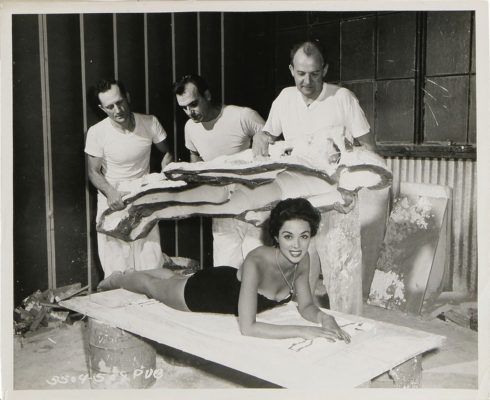Search
To search for an exact match, type the word or phrase you want in quotation marks.
A*DESK has been offering since 2002 contents about criticism and contemporary art. A*DESK has become consolidated thanks to all those who have believed in the project, all those who have followed us, debating, participating and collaborating. Many people have collaborated with A*DESK, and continue to do so. Their efforts, knowledge and belief in the project are what make it grow internationally. At A*DESK we have also generated work for over one hundred professionals in culture, from small collaborations with reviews and classes, to more prolonged and intense collaborations.
At A*DESK we believe in the need for free and universal access to culture and knowledge. We want to carry on being independent, remaining open to more ideas and opinions. If you believe in A*DESK, we need your backing to be able to continue. You can now participate in the project by supporting it. You can choose how much you want to contribute to the project.
You can decide how much you want to bring to the project.

On a day like today, when we celebrate, in different ways and under different names, this taste for playing at putting aside our bodies and feeling like images, I wanted to go to the cinema. To see? The invasion of the body snatchers [[The invasion of the body snatchers. Don Siegel, 1956.]]. Don Siegel, 1956.The protagonist’s struggle in the film, to escape a village where he finds himself forced to live with human duplicates, serves as a point of departure for remembering the need to think of images as alterity.
A doctor returns to the small town where he works having spent some time at a congress. When he arrives he stumbles upon the fact that several of his patients are suffering from the same illness: they don´t recognise as human some of the faces that are most familiar to them. What at the beginning seem to be isolated concerns evolve into a public health issue that increasingly affects a large part of the town. The alarm is raised when a call, interrupting a promising evening, leads him to see with his very own eyes the first physical evidence of something that is changing, an inanimate body, with no identity or any signs of life. But with no signs of death either. He looks suspiciously like the one who has discovered him, who remains alive. Who is it “No idea. It is like the first impression that’s stamped on a coin. But it isn´t finished”, says a man in front of the unfinished image of himself. Full of sleeping images, this city will soon be transited by inhuman copies of its inhabitants.
The protagonist, using his skills of diagnosis, leans over the body looking for signs of life or death. Nothing. It doesn’t have fingerprints, but everything else indicates that it is human. Later, when the bodies have woken up and have come to substitute the original neighbours of the city, the surprise is that they talk the protagonist’s language. They can communicate between themselves they form a community.
It is through recognising that we coexist with images that the fear emerges of being replaced by them. And for this we continue to see them as subordinates. The film is told from the point of view of a subject, the doctor, who at the same time is considered crazy. A doctor with the mission of identifying, who is human and who is the incomplete copy of the human, but whose judgement is doubted by the police and the psychiatrists.
One is reminded of the work of the visual studies theorist W.J.T. Mitchell [[W.J.T. Mitchel, What Do Pictures Want? (Chicago: University of Chicago Press, 2004)]] and his defence of the recognition of images as something more than inanimate objects. Images that we grant the recognition that implies that they are loved, hated, adored or desired by us, the humans. Entities, that are different but with which we allow ourselves certain types of behaviour worthy of all humanity.
Dr. Bennell is considered crazy by the authorities of another county. With the aim of proving his sanity he uses his own testimony as proof, like all mentally ill people. In the end it is the telephone call of a citizen unrelated to the case that corroborates the protagonist’s version and saves him from the illness. The defect is not his; the defect is in the incomplete images. W.J.T. Mitchell has also talked about how madness has been since ancient times subject to forms of staging and dramatization. The staging of mental illness is a means used to question the spectator with how reasonable it is to understand reality in another way; in this case questioning the possibility of coexisting with images of ourselves. But if the conclusion of the Invasion of the body snatchers is that we are saved, because the authorities of the neighbouring counties will control the situation, today things seem to have changed. From the decade of the fifties until today the staging of our relations with replicants has passed from being narrated in a tone of madness to adopting registers that are increasingly realistic. Think of Blade Runner [[Blade Runner. Ridley Scott, 1982.]] or 2001: a spacy odyssey [[2001: Una odisea en el espacio. Stanley Kubrick, 1968.]]. As if dealing with a hidden narrative thread, if one made an analysis of the way in which these links are formulated, they would seem to illustrate the words of Foucault, when he says that “one day we will no longer know what madness is. Its form will have closed up on itself and the traces will have disappeared and will no longer be visible” [[M. Foucault, Histoire de la folie à l’âge classique (Paris: Éditions Plon, 1964)]]. If the images were deviations of our humanity, today they form part of it.
Because maybe this is it, that images are not here as metaphors for another world. They are not doors to distant dimensions. They are here, with us, and want to remain. Happy Halloween.

Paloma Checa-Gismero is Assistant Professor at San Diego State University and Candidate to Ph.D. in Art History, Criticism and Theory at the University of California San Diego. A historian of universal and Latin American contemporary art, she studies the encounters between local aesthetics and global standards. Recent academic publications include ‘Realism in the Work of Maria Thereza Alves’, Afterall, autumn/winter 2017, and ‘Global Contemporary Art Tourism: Engaging with Cuban Authenticity Through the Bienal de La Habana’, in Tourism Planning & Development, vol. 15, 3, 2017. Since 2014 Paloma is a member of the editorial collective of FIELD journal.
"A desk is a dangerous place from which to watch the world" (John Le Carré)